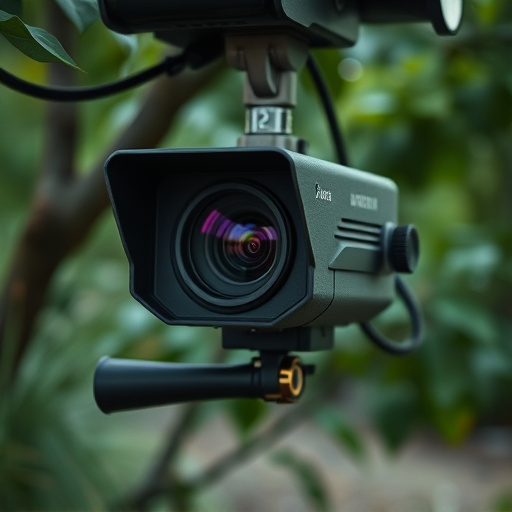Spy equipment has evolved, integrating into everyday objects and posing a major threat to home security. To combat this, understanding common hiding places like high-traffic areas or natural gathering spots is crucial. Mobile apps have become essential tools for hidden camera detection in the digital age, with advanced algorithms and sensors scanning surroundings for unusual activity. Maximizing app effectiveness requires strategic placement near high-risk areas, regular updates, and understanding limitations. Implementing robust security measures, including physical features like cameras, motion sensors, locks, and lighting, alongside app-based detection, significantly enhances overall safety by securing best hidden camera locations like windows, doors, mirrors, staircases, and electrical boxes.
In an era where privacy is a precious commodity, understanding and detecting hidden spy equipment has become paramount. Mobile apps have emerged as powerful tools in this regard, offering individuals and organizations a layer of protection against surveillance. This article delves into the world of spy gear detection using mobile applications. We explore the hidden nature of such devices, their common locations, and best practices for effective identification. Additionally, we discuss complementary home security measures to enhance privacy.
- Understanding Spy Equipment and Their Hidden Nature
- The Rise of Mobile Apps in Detecting Spy Gear
- Best Practices for Using Apps to Identify Hidden Cameras
- Top Home Security Measures to Complement App-Based Detection
Understanding Spy Equipment and Their Hidden Nature
Spy equipment, or surveillance devices, have evolved significantly over time, becoming increasingly sophisticated and hard to detect. These tools can be hidden in everyday objects, making them a significant concern for home security. From tiny cameras that fit inside a potted plant to listening devices disguised as common household items, the range of possible hidden spy equipment is vast. Understanding where these devices might be placed is crucial for maintaining privacy and personal safety.
The most common locations for best hidden camera spots in a home include areas with high foot traffic or where people naturally gather. This could mean hiding cameras behind picture frames, placing them inside ceiling fans, or even incorporating them into wall sockets. Some advanced spy equipment can even mimic everyday sounds or vibrations to avoid detection. Staying informed about these tactics allows individuals to be more vigilant and take proactive measures to safeguard their spaces from potential intrusions.
The Rise of Mobile Apps in Detecting Spy Gear
In today’s digital era, mobile apps have emerged as powerful tools for home security, offering innovative solutions to detect and prevent unauthorized surveillance, especially concerning hidden camera locations. The rise of advanced spy equipment has prompted individuals to seek accessible and effective countermeasures, leading to a surge in popularity for apps designed to identify potential threats. These applications provide users with the ability to scan their surroundings for hidden cameras, ensuring peace of mind in their own homes.
With just a few taps on a smartphone, individuals can now easily monitor best hidden camera locations within their living spaces. Many apps utilize advanced algorithms and sensors to detect unusual activity or suspicious devices, alerting users to potential security breaches. This technology has become increasingly sophisticated, keeping pace with the ever-evolving methods of spy gear manufacturers. As a result, folks are empowered to take control of their privacy and safety, fostering a sense of security in an era where surveillance equipment can be easily concealed.
Best Practices for Using Apps to Identify Hidden Cameras
When using mobile apps for hidden camera detection, it’s crucial to employ best practices for maximizing effectiveness and ensuring accurate results. First, focus on high-risk areas within your home or workplace, such as near windows, doors, mirrors, or in narrow spaces behind furniture. These are common locations where hidden cameras might be installed due to their privacy-invading nature. Regularly update the apps to access the latest detection algorithms and camera models known to be in use.
Additionally, familiarize yourself with the app’s capabilities and limitations to avoid false positives. Ensure you understand the types of signals the app can detect and recognize that not all cameras will emit detectable signals. Maintain a cautious mindset and cross-reference findings with physical inspections whenever possible. Privacy and security go hand in hand; prioritizing both ensures your peace of mind without leading to unnecessary alarmism.
Top Home Security Measures to Complement App-Based Detection
In addition to leveraging mobile apps for spy equipment detection, implementing robust home security measures can significantly enhance overall safety. Identifying and securing the best hidden camera locations around your home is a crucial first step. This includes checking common areas like windows, doors, and staircases, as well as less obvious spots such as inside electrical boxes or behind mirrors.
Complementing app-based detection with physical security features creates a multi-layered defense. Using high-quality security cameras, motion sensors, and robust locks further deters potential intruders. Additionally, ensuring proper lighting both inside and outside your home acts as a visual deterrent, making it more difficult for unauthorized devices to operate undetected.
In conclusion, mobile apps have emerged as powerful tools in the fight against spy equipment, offering an accessible and practical solution for identifying hidden cameras. By combining app-based detection with robust home security measures, such as securing best hidden camera locations, individuals can significantly enhance their privacy and safety. Staying informed about the latest advancements and following best practices ensures effective protection from these covert threats.
